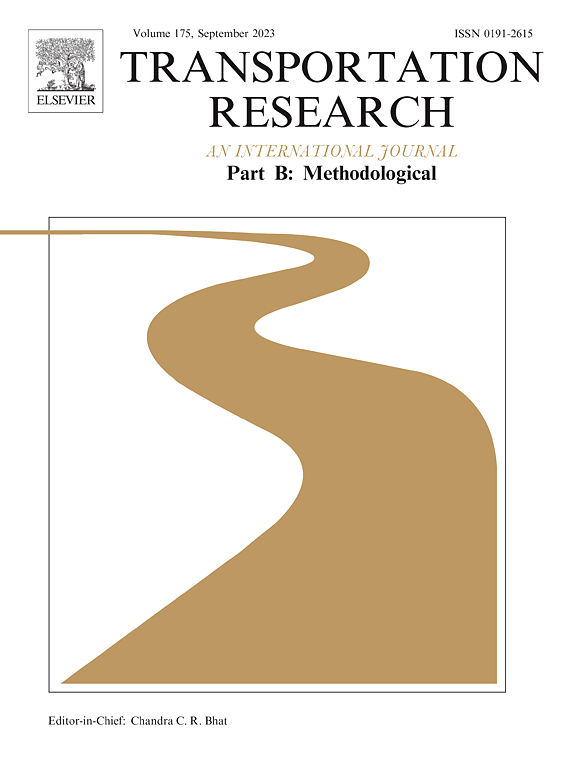市场规模和公共交通免费理论
IF 6.3
1区 工程技术
Q1 ECONOMICS
引用次数: 0
摘要
对免费公共交通的研究表明,在小社区最方便,因为他们的交通系统往往有更低的车费回收率和更大的可用容量。本文通过一个公交车路线的静态模型,为这些趋势提供了一个基本原理,该模型包含上车/下车延误、拥挤和弹性需求,并随“市场规模”参数缩放。由于乘客施加的外部性,客流量作为给定一定市场规模和代理商选择的票价和机队规模的均衡结果产生。当选择满足社会剩余最大化的一阶和二阶条件的票价和车队规模时,在较小的市场中,车费箱回收率、每辆公交车上的乘客人数和每辆公交车上的乘客率都较小。扩展探索容量选择。本文章由计算机程序翻译,如有差异,请以英文原文为准。
Market size and fare-free public transit in theory
Studies of fare-free public transit claim it is most convenient in small communities, because their transit systems tend to have lower farebox recovery ratios and more available capacity. This paper offers a rationale for these tendencies by working through a static model of a bus route with boarding/alighting delays, crowding and elastic demand that scales with a “market size” parameter. Due to externalities passengers impose, ridership arises as an equilibrium outcome given a certain market size and the agency’s choice of fare and fleet size. When the fare and fleet size are chosen to satisfy the First- and Second-Order Conditions for maximizing social surplus, the farebox recovery ratio, number of passengers on each bus and the rate passengers board each bus are all smaller in smaller markets. An extension explores capacity choice.
求助全文
通过发布文献求助,成功后即可免费获取论文全文。
去求助
来源期刊
CiteScore
12.40
自引率
8.80%
发文量
143
审稿时长
14.1 weeks
期刊介绍:
Transportation Research: Part B publishes papers on all methodological aspects of the subject, particularly those that require mathematical analysis. The general theme of the journal is the development and solution of problems that are adequately motivated to deal with important aspects of the design and/or analysis of transportation systems. Areas covered include: traffic flow; design and analysis of transportation networks; control and scheduling; optimization; queuing theory; logistics; supply chains; development and application of statistical, econometric and mathematical models to address transportation problems; cost models; pricing and/or investment; traveler or shipper behavior; cost-benefit methodologies.

 求助内容:
求助内容: 应助结果提醒方式:
应助结果提醒方式:


